Carrying a concealed firearm is a weighty responsibility that requires utmost caution and adherence to safety protocols. You may think you know the basics, but there are seven key techniques that can take your concealed carry game to a whole new level.
From selecting the perfect holster to staying mindful of your surroundings, these techniques will not only enhance your safety but also instill a sense of confidence in your abilities.
So, get ready to take your concealed carry skills to the next level as we explore these essential techniques that every responsible carrier should know.
Key Takeaways
- Choose a holster that fully covers the trigger guard and securely fits your specific gun model to prevent accidental discharges and unauthorized access.
- Test and find a comfortable holster that allows for a smooth and efficient draw while maintaining firearm safety.
- Make clothing choices that aid in concealing your firearm, such as slightly loose-fitting clothes, layering, and darker-colored or patterned garments.
- Prioritize regular firearm training and maintenance, including practicing drills, maintaining familiarity with your firearm, and keeping it clean to ensure safe and effective concealed carry.
Proper Holster Selection
When selecting a holster for concealed carry, there are several factors to consider to ensure safe and secure firearm storage and accessibility.
First, it is important to choose a holster that covers the trigger guard completely. This is crucial for preventing accidental discharges and ensuring that the trigger is not inadvertently pulled.
Second, the holster should provide a secure fit for your specific gun model. This means that it should hold the firearm in place and prevent it from falling out or being easily accessed by unauthorized individuals.
In addition to these safety considerations, comfort is also a key factor in holster selection. It is important to find a holster that suits your body type and carrying preferences. This may involve testing different styles and positions to determine what works best for you.
Ultimately, the chosen holster should allow for a smooth and efficient draw. This means that you should be able to quickly and easily access your firearm when needed, while still maintaining firearm safety.
Effective Concealment Techniques
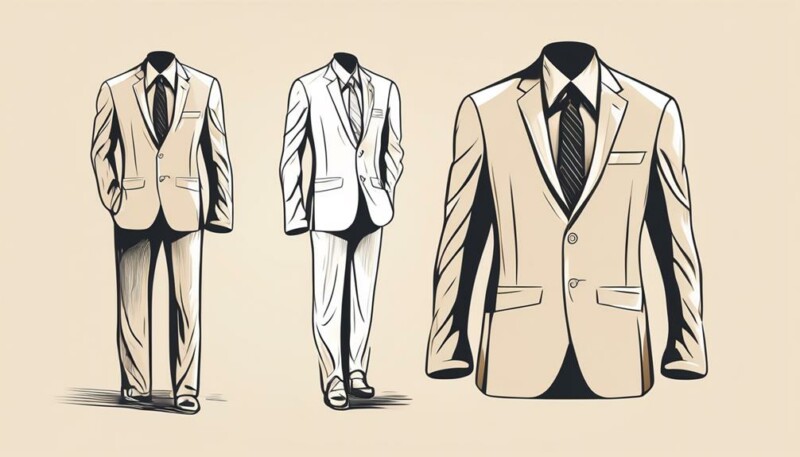
When it comes to effectively concealing your firearm, proper clothing choices and holster selection are key.
Your clothing should allow you to conceal your firearm without impeding your ability to access it quickly and safely.
Additionally, selecting the right holster that positions your firearm properly and utilizing cover garments can help maintain effective concealment.
By considering factors such as body type and firearm size, you can optimize your concealed carry options.
Regularly assessing and adjusting your concealment techniques will ensure that you're effectively hiding your firearm.
Proper Clothing Choices
To effectively conceal your firearm, it's crucial to make proper clothing choices that prioritize fit, material, and color. When selecting your clothing, opt for pieces that fit well but are slightly loose. This will help prevent printing and ensure your firearm remains concealed.
Layering with jackets, vests, or longer shirts can also aid in concealing your gun. Choosing darker-colored clothing, patterns, or prints can help disguise any printing or outlines.
Additionally, selecting clothing made from thicker materials can prevent printing and maintain concealment. Avoid clothing with tight fits, thin materials, or excessive draping, as these can reveal the shape of your concealed firearm.
Holster Selection
Consider the size, comfort, and accessibility of your holster to effectively conceal your firearm.
When it comes to carrying a concealed carry (CCW) firearm, choosing the right holster is crucial. A good holster should offer proper retention and trigger protection for safe carrying. It should also allow for easy and quick access to your firearm when needed.
Look for a holster that provides effective concealment to avoid printing or exposure of your firearm, ensuring that you comply with local laws and maintain a responsible approach to carrying.
Different holsters, such as inside the waistband (IWB) holsters or pocket holsters, cater to different carry styles, so choose one that suits your preferences and ensures comfort and ease of use.
Consistent Firearm Training
To ensure safe concealed carry, it's crucial to prioritize consistent firearm training. Regular practice and drills help improve your muscle memory, accuracy, and decision-making skills in different scenarios.
Maintaining familiarity with your firearm allows you to adapt to various concealed carry methods and equipment, ensuring readiness and safety in any situation.
Regular Practice and Drills
Regularly practicing drills is crucial for maintaining proficiency and confidence in handling your concealed firearm. Consistent firearm training is necessary to develop muscle memory and ensure safe and effective use of your CCW firearm. Here are five key reasons why regular practice and drills are essential for concealed carriers:
- Muscle Memory: Regular training helps develop muscle memory, allowing you to instinctively and safely handle your firearm in high-stress situations.
- Skill Refinement: Regular drills allow you to refine your marksmanship and firearm handling skills, enhancing your overall preparedness for self-defense scenarios.
- Safety Awareness: Consistent training helps identify and correct any potential safety or handling issues with your concealed carry weapon.
- Responsible Gun Ownership: Taking a course on carrying a concealed firearm reinforces the need to be responsible for every bullet that leaves your gun.
- Holster Familiarity: Regular practice allows you to ensure your holster choice is appropriate and that you can effectively and safely conceal your CCW.
Practicing drills regularly can save your life and help you confidently protect yourself and others.
Proper Grip and Stance
Developing a proper grip and stance through consistent firearm training is essential for concealed carriers to ensure accuracy, control, and readiness in self-defense situations.
When carrying a concealed firearm, it's crucial to have a secure grip on the gun to maintain control and prevent accidental discharge. A proper grip involves firmly wrapping your dominant hand around the firearm's grip and using your non-dominant hand to support it. This technique provides stability and control, allowing you to effectively defend yourself if needed.
Additionally, a correct stance is vital for maintaining balance and managing recoil. By standing with your feet shoulder-width apart, knees slightly bent, and body leaning forward, you'll have a stable foundation to absorb recoil and maintain accuracy.
Consistent training in grip and stance methods will enhance your overall firearm handling skills, ensuring you're prepared to defend yourself safely and effectively.
Familiarity With Firearm
Consistently training with your CCW firearm is essential for developing familiarity and proficiency in handling it safely and effectively. By dedicating time to regular practice, you'll become more comfortable with your firearm and gain the necessary skills to respond appropriately in different situations.
To ensure you make the most of your training sessions, consider the following key points:
- Holster Selection: Choose a holster that's comfortable, secure, and allows for a quick draw.
- Firearm Safety: Always prioritize safety by keeping your finger off the trigger until ready to shoot and following all firearm safety rules.
- Situational Awareness: Stay alert and aware of your surroundings at all times to anticipate potential threats.
- Knowledge of Local Laws: Familiarize yourself with the laws and ordinances regarding carrying a concealed firearm in your area.
- Practice with Different Methods: Train with different primary methods of concealed carry, such as a pocket holster or an inside-the-waistband holster.
Mindfulness of Surroundings

To ensure the safety of yourself and others while carrying a concealed firearm, it's crucial to remain constantly aware of your surroundings and be vigilant for any potential threats. Mindfulness of your surroundings is key to maintaining a safe concealed carry. Pay close attention to people's behavior and any unusual activities. Stay alert and prepared by regularly scanning your environment, identifying exits, and assessing potential threats in different scenarios.
Avoid distractions and stay focused on your surroundings, especially in unfamiliar or crowded environments. By doing so, you can maintain a high level of awareness and be ready to respond if needed. Remember, your concealed carry firearm is a tool for self-defense. By being mindful of your surroundings, you can better assess situations and determine if drawing your firearm is necessary to protect yourself or others.
When carrying a concealed firearm, ensure that you have a reliable holster that securely holds your firearm in place. This will prevent any accidental discharges and keep the trigger protected. Additionally, consider investing in a Liberty Safe or similar secure storage option to keep your firearm safely stored when it isn't on your person.
Being mindful of your surroundings is one of the primary methods to ensure a safe concealed carry. Stay vigilant, stay aware, and be prepared to defend yourself and others if necessary.
Proper Draw and Presentation
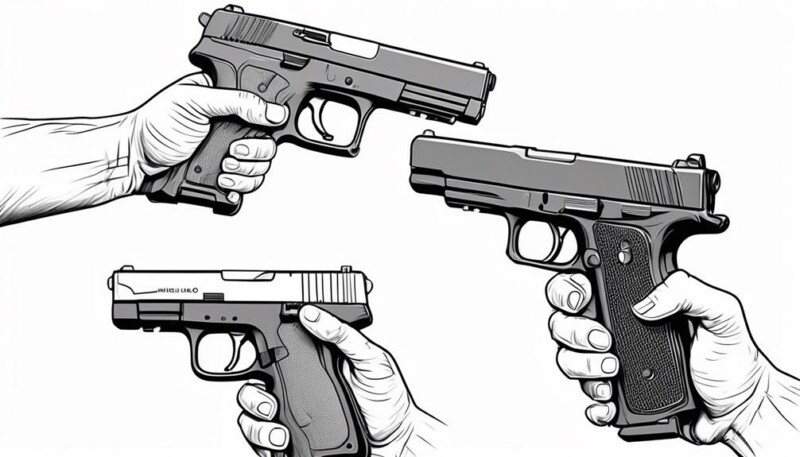
Practice a smooth and deliberate draw and presentation technique to efficiently access your concealed firearm in a defensive situation. When it comes to carrying a concealed firearm, your ability to draw and present it quickly and safely can mean the difference between life and death. To ensure you're prepared to defend yourself effectively, follow these key principles:
- Smooth and deliberate draw: Practice your draw to minimize the risk of accidents or delays. Avoid fumbling with your holster or firearm, as this can lead to unintended discharges or wasted time.
- Controlled and precise presentation: Master the skill of presenting your firearm from concealment in a controlled and precise manner. This allows you to address a threat efficiently and effectively.
- Consistent and repeatable method: Maintain a consistent and repeatable draw and presentation method through regular practice and training. This ensures muscle memory and reduces the chances of making mistakes under stress.
- Situational awareness: Incorporate situational awareness and assessment into your draw and presentation process. Before drawing your firearm, assess the situation to make informed decisions about whether it's necessary to defend yourself.
- Trigger discipline: Practice trigger discipline during your draw and presentation. Keep your finger off the trigger until you have made the decision to fire. This prevents accidental discharges and ensures safe handling of your firearm.
Regular Maintenance and Cleaning
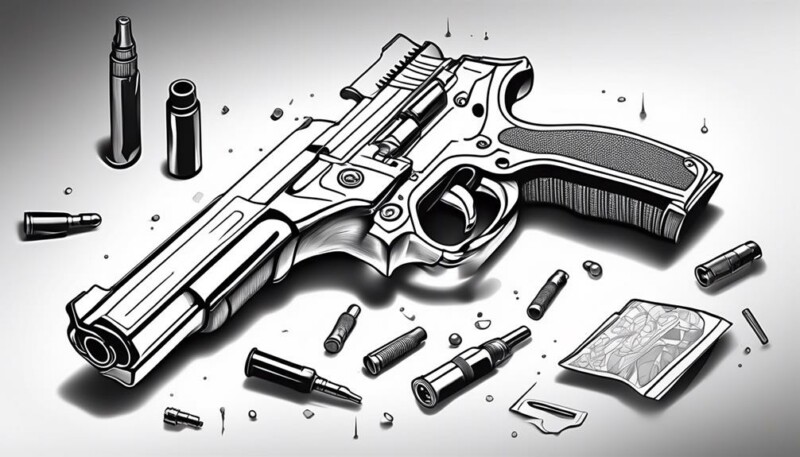
Regularly maintaining and cleaning your concealed carry firearm is essential for ensuring its proper functionality and longevity. By taking the time to clean and inspect your firearm, you can be confident that it will function safely and effectively when you need it most. Here are some key points to consider when it comes to regular maintenance and cleaning:
| Area | Need for Cleaning | How to Clean |
|---|---|---|
| Barrel | Regular cleaning to remove debris and fouling | Use a bore brush and cleaning solvent to scrub the barrel thoroughly |
| Slide | Remove dirt, dust, and grime for smooth operation | Wipe down the slide with a clean cloth and apply lubricant as needed |
| Magazine | Ensure proper feeding and function | Disassemble the magazine and clean the inside with a brush and solvent |
| Holster | Keep it clean and free from debris | Wipe down the holster regularly and remove any dirt or lint |
| Trigger | Maintain a clean and smooth trigger pull | Use compressed air to remove any debris and apply lubricant if necessary |
Remember to follow the manufacturer's guidelines for maintenance and cleaning. Storing your firearm in a clean and dry environment is also crucial to prevent corrosion and damage. By regularly maintaining and cleaning your concealed carry firearm, you can be sure that it will be ready to defend you in a safe and effective manner.
Understanding Legal Considerations
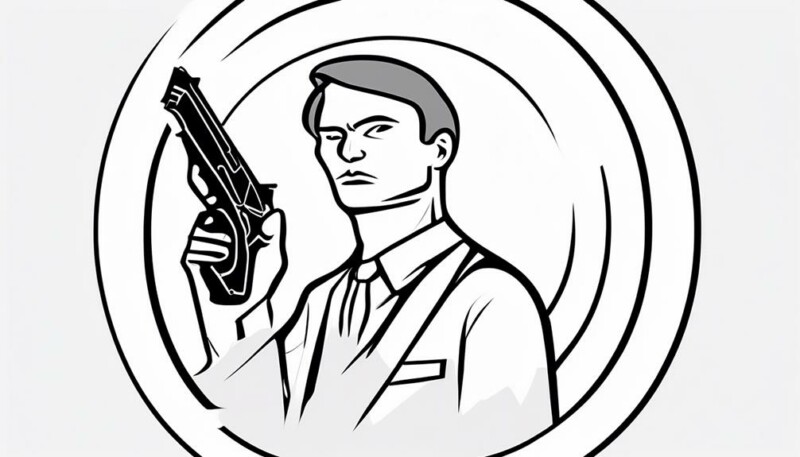
Understanding the legal considerations surrounding concealed carry is crucial for responsible gun owners. It's important to be aware of the laws and regulations that govern the carrying of concealed firearms in your jurisdiction. Here are some key points to keep in mind:
- Carry a concealed firearm: Before carrying a concealed firearm, make sure you're familiar with the laws in your area. Some states require a permit to carry concealed, while others allow it without a permit. It's essential to know the specific requirements and comply with them.
- CCW holsters: Invest in a high-quality CCW holster that provides both comfort and security. The ability to place your firearm accurately and retrieve it quickly is crucial in a self-defense situation.
- Local ordinances: Be aware of any local ordinances that may impose additional restrictions on carrying concealed firearms. Some cities or counties may have specific CCW regulations that differ from state laws.
- Best CCW for you: Choose a CCW firearm that suits your needs and abilities. Consider factors such as size, weight, and ease of use when selecting the best CCW for you.
- Ability to defend: Remember that carrying a concealed firearm comes with a responsibility to use it judiciously. Familiarize yourself with the laws regarding the use of force and self-defense in your jurisdiction.
Understanding and adhering to the legal considerations surrounding concealed carry is essential for responsible gun owners. By staying informed and following the laws, you can exercise your right to carry a concealed firearm in a safe and lawful manner.
For more detailed information on this topic, please refer to the full article.
Developing a Concealed Carry Mindset
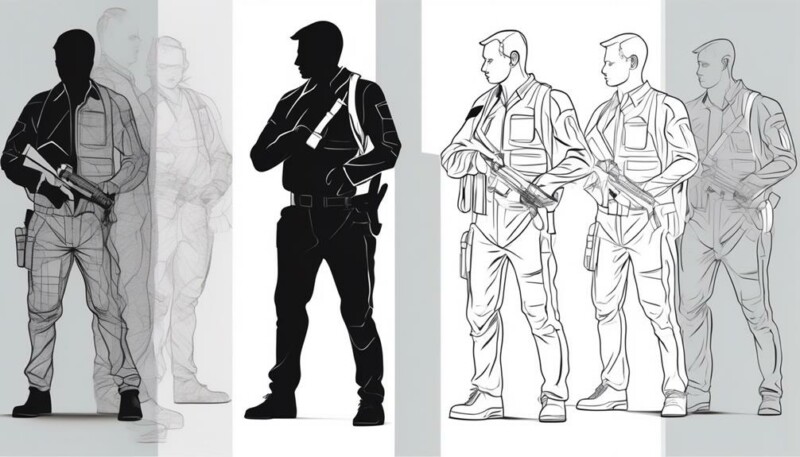
When developing a concealed carry mindset, it's crucial for responsible gun owners to prioritize safety, legality, and an understanding of the potential consequences associated with carrying a concealed firearm. Carrying a firearm for self-defense requires a heightened level of awareness and responsibility.
It's important to know the primary methods of carrying a concealed firearm and to choose the one that suits your needs and lifestyle.
One of the primary methods of carrying a concealed firearm is the AIWB carry, which stands for Appendix Inside the Waistband. This method involves carrying the firearm in front of your body, in the 12 o'clock position. It provides quick access to the firearm, but it's important to ensure that the holster used is of high quality and covers the trigger guard completely.
Another method is off-body carry, which involves carrying the firearm in a bag or purse. While this method may offer convenience, it's important to use a dedicated holster or compartment within the bag to ensure the firearm is secure and can't be accessed by unauthorized individuals.
Regardless of the method chosen, it's essential to practice proper gun safety at all times. This includes keeping the firearm holstered when not in use, keeping your finger outside the trigger guard until ready to shoot, and always being aware of your surroundings.
Developing a concealed carry mindset isn't just about carrying a firearm, but also about understanding the potential consequences and responsibilities that come with it. It's important to prioritize safety, legality, and the ability to defend yourself while minimizing the risk of causing unnecessary harm.
Frequently Asked Questions
What Is the Best Safety for Concealed Carry?
The best safety for concealed carry is a combination of factors.
It starts with selecting a high-quality holster that protects the trigger and allows for proper grip.
Trigger discipline and firearm retention are crucial for safe carry.
Concealed carry training is essential to develop the skills needed for self-defense.
Clothing considerations and proper holster positioning ensure effective concealment.
Situational awareness and a defensive mindset are key to staying safe.
Lastly, always obey concealed carry laws to stay legal and responsible.
What Is the Best Method of Concealed Carry?
The best method of concealed carry involves choosing a high-quality holster that securely conceals your firearm. Consider clothing options that allow for easy access and proper concealment.
Regular concealed carry training is essential for developing the skills and mindset needed to carry safely. Familiarize yourself with local laws and regulations to ensure compliance.
Accessories such as spare magazines and tactical flashlights can enhance your carry setup. Remember, concealed carry isn't one-size-fits-all, so adapt your methods to your body type and environment.
What Is the Most Effective Position for Concealed Carry?
The most effective position for concealed carry depends on your personal preference and body type. Shoulder holsters offer easy access, while appendix carry is popular for its quick draw. Inside the waistband holsters provide good concealment, while pocket carry is convenient for smaller firearms.
Ankle carry is discreet but may be slower to draw. Belly bands offer versatility and can be worn in multiple positions. Cross draw carry allows for easy access with your non-dominant hand. Small of back carry is comfortable but can be difficult to access.
Off body carry in purses or bags is an option, but be cautious of theft. Thigh holsters offer accessibility but may be less comfortable for extended periods.
Which Technique of Carrying a Firearm Provides the Best Control?
The technique that provides the best control for carrying a firearm is the Inside the Waistband (IWB) carry. It allows for a close body positioning, enhancing control and retention.
Other techniques such as strong side draw, appendix carry, shoulder holster, pocket carry, ankle carry, cross draw, small of back carry, outside the waistband (OWB) carry, and belly band carry may have their advantages, but the IWB carry offers the optimal combination of control, accessibility, and security.
Regular practice and training are essential for developing and maintaining proficiency with this technique.
Conclusion
In conclusion, mastering the art of safe concealed carry requires a combination of knowledge, skill, and responsibility.
By following the seven key techniques outlined in this article, you can ensure the safety of yourself and those around you.
Remember, concealed carry isn't just about having the right equipment or permits; it's about developing a mindset that prioritizes safety and preparedness.
So, lock and load your knowledge, holster your responsibility, and aim to be the guardian of your own protection.
